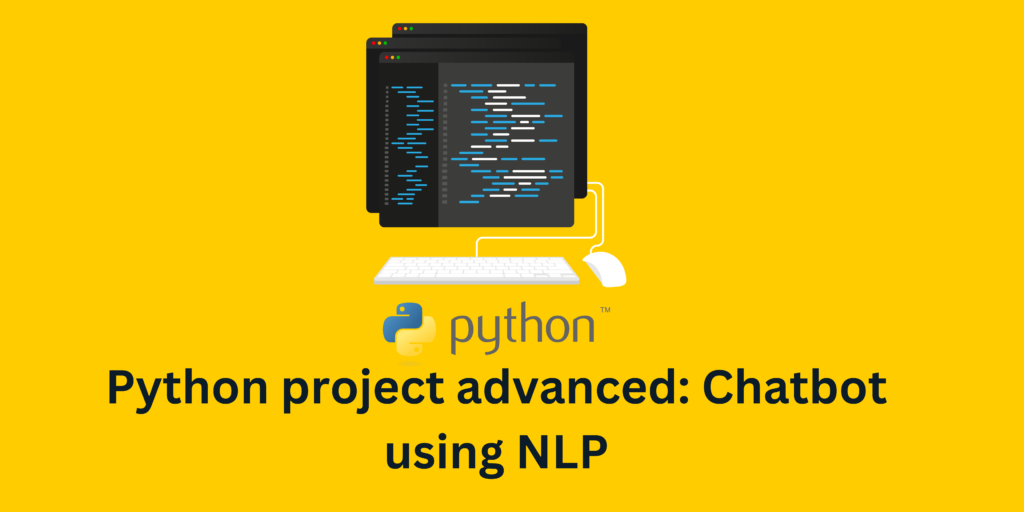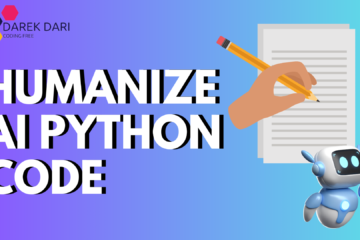
Python project advanced: Here’s an advanced Python project with code. This project involves building a chatbot using Natural Language Processing (NLP) techniques.
Objective of Python project advanced: Chatbot using NLP
To build a chatbot that can understand and respond to user queries in natural language.
Tools and Libraries Used
- Python 3.6+
- Natural Language Toolkit (NLTK)
- TensorFlow 2.0+
- Keras
- Flask
Steps of python project advanced
- Install the necessary libraries by running the following commands in your terminal:
pip install nltk tensorflow keras flask
- Import the required libraries and download the NLTK data:
import nltk
nltk.download('punkt')
- Preprocess the data by tokenizing and stemming the text:
from nltk.stem.lancaster import LancasterStemmer
stemmer = LancasterStemmer()
def preprocess(sentence):
sentence_words = nltk.word_tokenize(sentence)
sentence_words = [stemmer.stem(word.lower()) for word in sentence_words]
return sentence_words
- Load the training data and preprocess it:
import json
with open('intents.json') as file:
data = json.load(file)
training_data = []
output_data = []
for intent in data['intents']:
for example in intent['examples']:
training_data.append(preprocess(example))
output_data.append(intent['intent'])
- Create a bag of words model:
import numpy as np
words = []
for sentence in training_data:
words.extend(sentence)
words = sorted(list(set(words)))
output_classes = sorted(list(set(output_data)))
training = []
output = []
for i, sentence in enumerate(training_data):
bag = [1 if word in sentence else 0 for word in words]
training.append(bag)
output_bag = np.zeros(len(output_classes))
output_bag[output_classes.index(output_data[i])] = 1
output.append(output_bag)
training = np.array(training)
output = np.array(output)
- Define the neural network model:
from tensorflow.keras.models import Sequential
from tensorflow.keras.layers import Dense
model = Sequential()
model.add(Dense(8, input_shape=(len(training[0]),), activation='relu'))
model.add(Dense(8, activation='relu'))
model.add(Dense(len(output_classes), activation='softmax'))
- Train the model:
model.compile(loss='categorical_crossentropy', optimizer='adam', metrics=['accuracy'])
model.fit(training, output, epochs=1000, batch_size=8)
- Create a function to generate responses:
def generate_response(sentence):
sentence_words = preprocess(sentence)
bag = [1 if word in sentence_words else 0 for word in words]
prediction = model.predict(np.array([bag]))[0]
max_index = np.argmax(prediction)
if prediction[max_index] > 0.7:
return output_classes[max_index]
else:
return 'unknown'
- Create a Flask app to host the chatbot:
from flask import Flask, request, jsonify
app = Flask(__name__)
@app.route('/chatbot', methods=['POST'])
def chatbot():
data = request.get_json()
message = data['message']
response = generate_response(message)
return jsonify({'message': response})
if __name__ == '__main__':
app.run()
- Create a JSON file to store the intents:
{
"intents": [
{
"intent": "greeting",
"examples": [
"hi",
"
What is next
Once you have completed the project, you can further improve it by:
- Adding more intents and examples to the training data to increase the chatbot’s accuracy.
- Implementing a more sophisticated NLP model such as a transformer-based model like BERT or GPT-3.
- Integrating the chatbot with a voice interface using a speech recognition library like Google’s Speech Recognition or Sphinx.
- Creating a user interface for the chatbot using a web development framework like React or Angular.
You can also explore other advanced Python projects such as building a recommendation system, image recognition, or sentiment analysis.




0 Comments